Coconut milk is one of the few plant-based milks that acts almost as good as dairy milk in terms of function and nutritional composition, but like dairy, can coconut milk curdle? After all, it comes from the meat kernel of mature coconuts, however just like cow's milk, it can be purchased canned, bagged, or powdered.
Coconut milk is versatile and added to many recipes these days, often as a vegan milk replacement. But separated or curdled coconut milk can sometimes intimidate cooks, novice or otherwise. However, in some cases, coconut milk separation is unavoidable— though that doesn't mean it's irreparable.
In this article I cover how to fix separated coconut milk in hot and cold dishes, including in soups, curries, and frozen dishes.
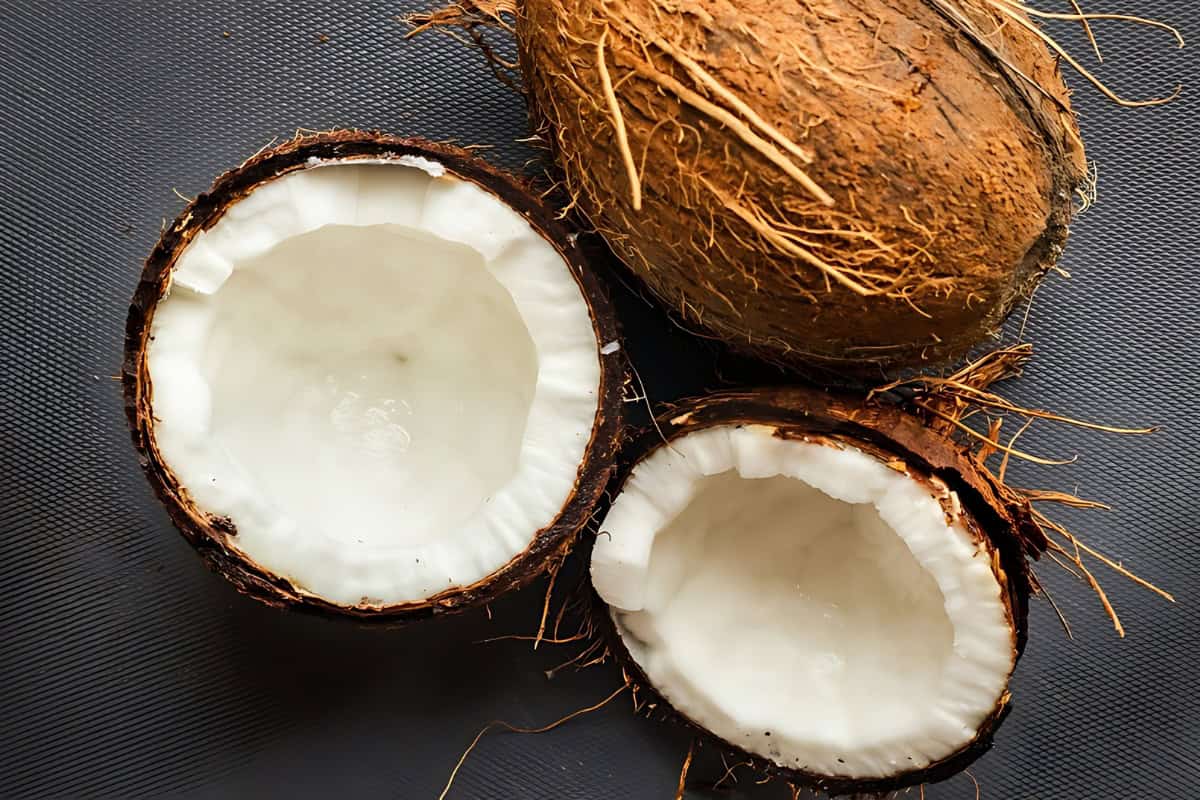
Jump to:
🥥 Why Does Coconut Milk Separate?
It's now become popular to use coconut milk as a braising liquid, add it to beverages for extra creaminess, and to mellow spices in normally hot dishes like curries. The downside of using coconut milk in these scenarios is that it takes a certain amount of skill to avoid coconut milk splitting during cooking.
So why does coconut milk curdle? You probably wonder why this can happen to coconut milk even when you haven’t touched it yet.
This is because the slightly acidic (pH 5.9) coconut milk is made up of protein, fat, and roughly three-quarters water. When applying heat, the proteins change their shape, as well as their ability to interact with oil and water, sometimes resulting in curdled coconut milk.
Curdled or coagulated coconut milk is in fact inevitable when heat (over 176°F/80°C) or acid (pH 3.5-6) are added to the mix, causing protein denaturation and releasing oil on the surface. A different issue happens in cold environments.
A hardened layer of cream forms on top, while the liquid portion goes to the bottom of the container. These can cause problems, as the curds make a dish look unappetizing, and the hardened cream is more difficult to use, especially when you need it in liquid form.
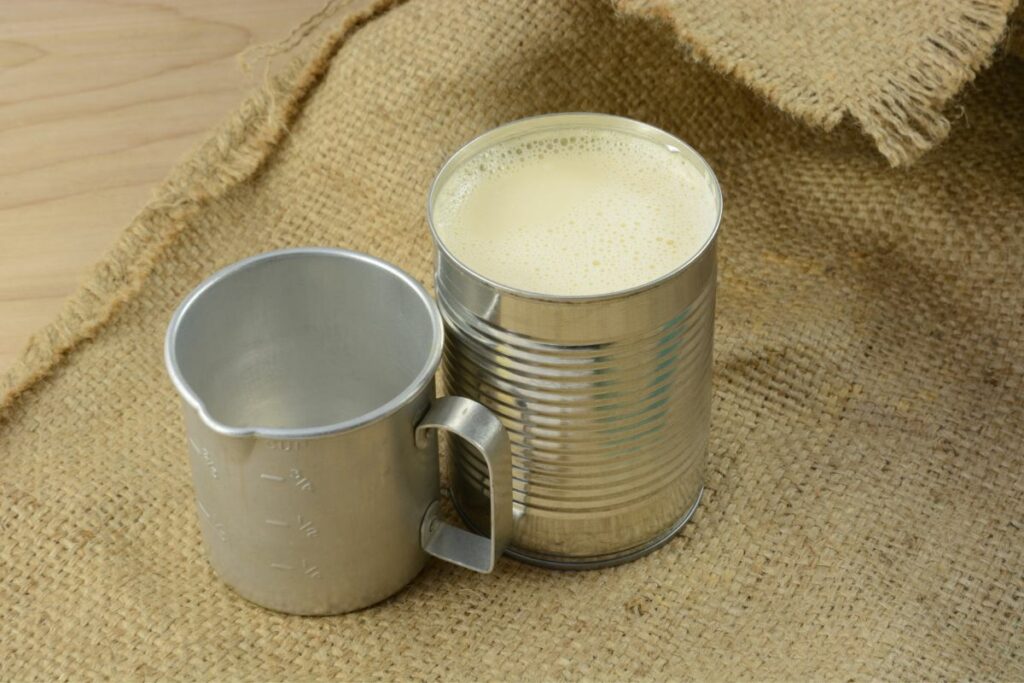
🤔 How to Fix Coconut Milk Separated in Can
There will be a time when you need to make whipped coconut cream, a room temperature sauce, or energy bars, but run into an unforeseen issue. It turns out you stored it in the fridge too long, so the coconut milk separated and has formed a hard layer of cream on top and liquid on the bottom.
What can you do to fix separated coconut milk? First, bring the chunky coconut milk to room temperature. Do this naturally; don't rush the process by applying heat. Once it has acclimated to room temperature, transfer the coconut milk into a new covered container and shake it to combine the components again.
This will result in a semi-lumpy or even smooth consistency of coconut milk. Since separation was already naturally occurring, it comes down to whether you need it immediately or not.
Coconut milk solidifies above 58°F (14°C), curdles when boiled in a covered pot, and will curdle further when too much acid is added. When measuring recipes, always use homogenous coconut milk, because using an uneven version can alter the end product’s mouthfeel, viscosity, and consistency.
So shake that can of room-temperature coconut milk before use, but make sure to use it immediately, as it will undoubtedly separate again in a few hours. If you want it smooth & creamy longer, blend in a low histamine stabilizer like coconut flour or tapioca starch before storing.
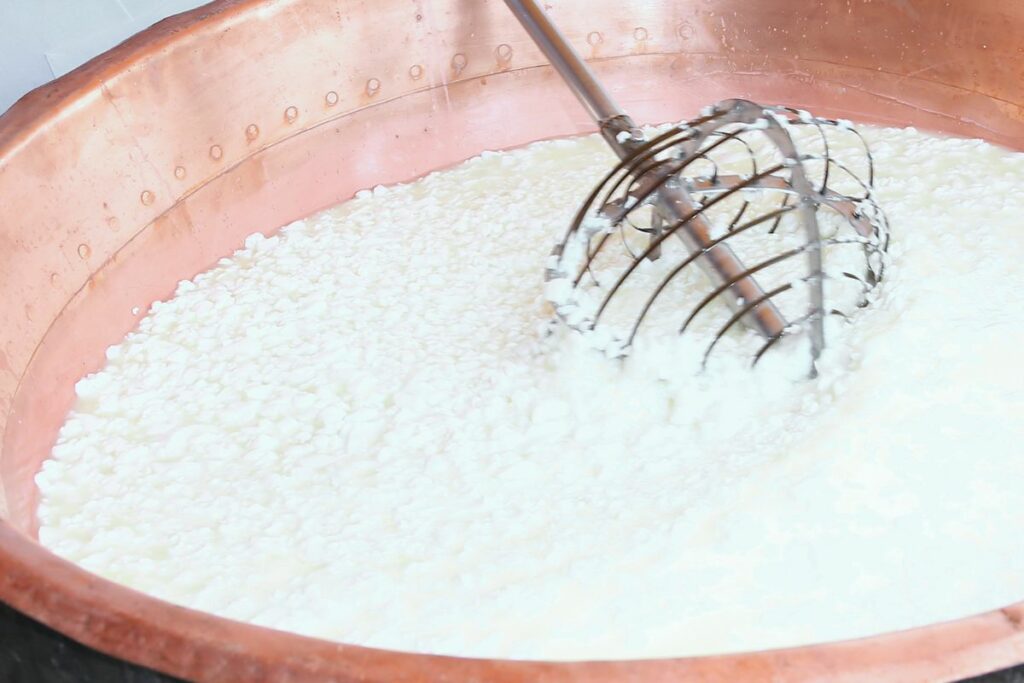
🥛 How to Fix Frozen Coconut Milk Separated
Like dairy milk, coconut milk easily gets rancid and spoils. Both homemade coconut milk and the stuff from the can, once opened, can be stored in the fridge for 7 to 10 days (or frozen for a few months, if you have histamine issues).
However, freezing is extremely damaging to coconut milk because it separates the two phases and creates grainy curdling. But with a bit of effort, it is reversible in two steps: first, thaw the coconut milk overnight in the fridge. Second, blend until homogenous again and use immediately.
If you end up with leftover coconut milk once again, fill the container up to two-thirds of the way, as liquid expands when frozen. Then cover the container with aluminum; this will ensure that the coconut milk stays fresh inside. Coconut milk will take roughly 8 hours to set, depending on how much you store.
If you want to then make ice cream with frozen coconut milk, there are a variety of stabilizers that will make this possible. If you have histamine issues, the problem is finding one you tolerate.
Proteins such as eggs and gelatin are good examples of stabilizers which are often tolerated and easy to find. For the vegans, agar agar or starches (cornstarch or any low histamine flour) would be the first ones I'd try.

🍲 How to Fix Curdled Coconut Milk in Soup
If while cooking, unsightly lumps of coconut milk form in your soup, don’t fret. Here’s how you fix it: add half a teaspoon of tapioca starch (or cornstarch, if tolerated) to your soup to stabilize the coconut milk. Don’t stop stirring until homogenized, and lower the heat.
Add more starch if needed, half a teaspoon at a time. You can also stir the starch into the can of coconut milk before adding it to the soup, but keep in mind that every little bit with further thicken your dish. Ideally for soups, coconut milk should be added in the last 5 minutes of cooking to prevent curdling.
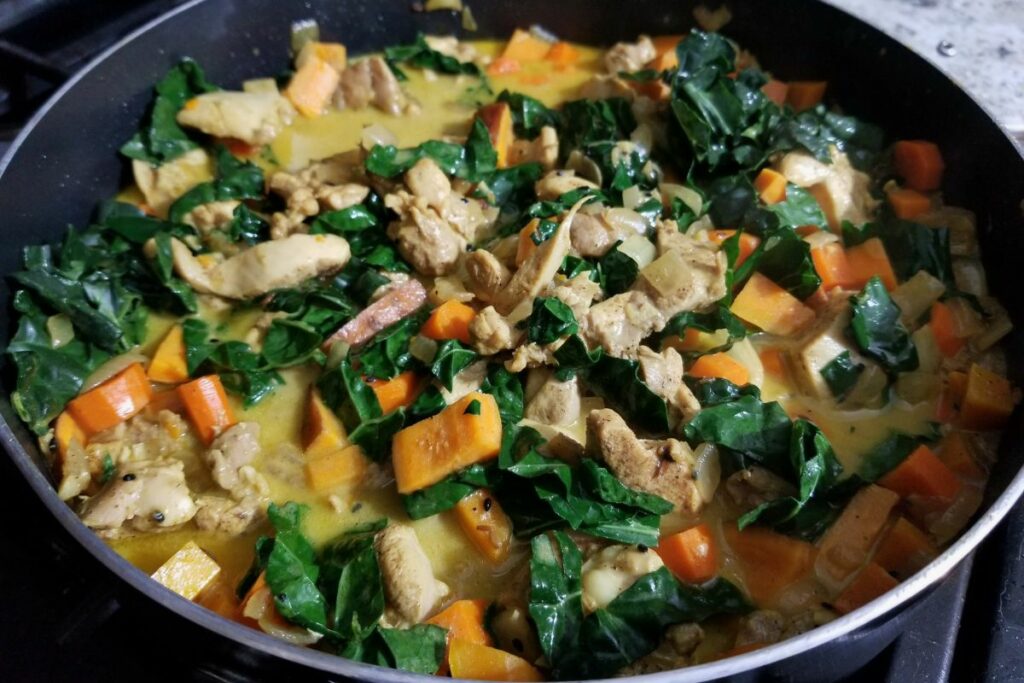
🥘 How to Fix Coconut Milk Curdled in Curry
A lot of curry dishes call for the use of coconut milk. Not only does it add creaminess, but it tones down strong spices and gives dishes a milder, more harmonious flavor.
Normally when adding cream of any kind to a bubbling mixture, you turn down the heat and keep stirring. But if things take a wrong turn and the coconut milk curdles while you cook, start off by lowering the heat; this will avoid more curds from forming.
Take out any solids in the curry, like the meat and veggies, then make a slurry from 1 tablespoon of tapioca starch and 2 tablespoons of water. Add it to the curry a little at a time, and within a few minutes the mixture will stabilize the coconut milk.
Keep stirring until the lumps are gone, and you'll end up with a smooth curry. Then add your other ingredients back in, stir constantly, and adjust the heat until your dish is done cooking. Ideally, coconut milk should be added in the last 5 minutes of cooking curry to avoid separation.
For a visualization, the little curdled bits in your curry are actually fat globules floating on a bed of water & other ingredients. Separation will be more of an issue if you cook your curry with the lid on.
For those of you asking is curdled coconut milk safe to eat, the answer depends on whether it curdled in the can or during cooking, and whether it's mildly or heavily curdled. To avoid curdled coconut milk in curry in the first place, mix your ingredients thoroughly, simmer don't boil, and keep your pot uncovered.
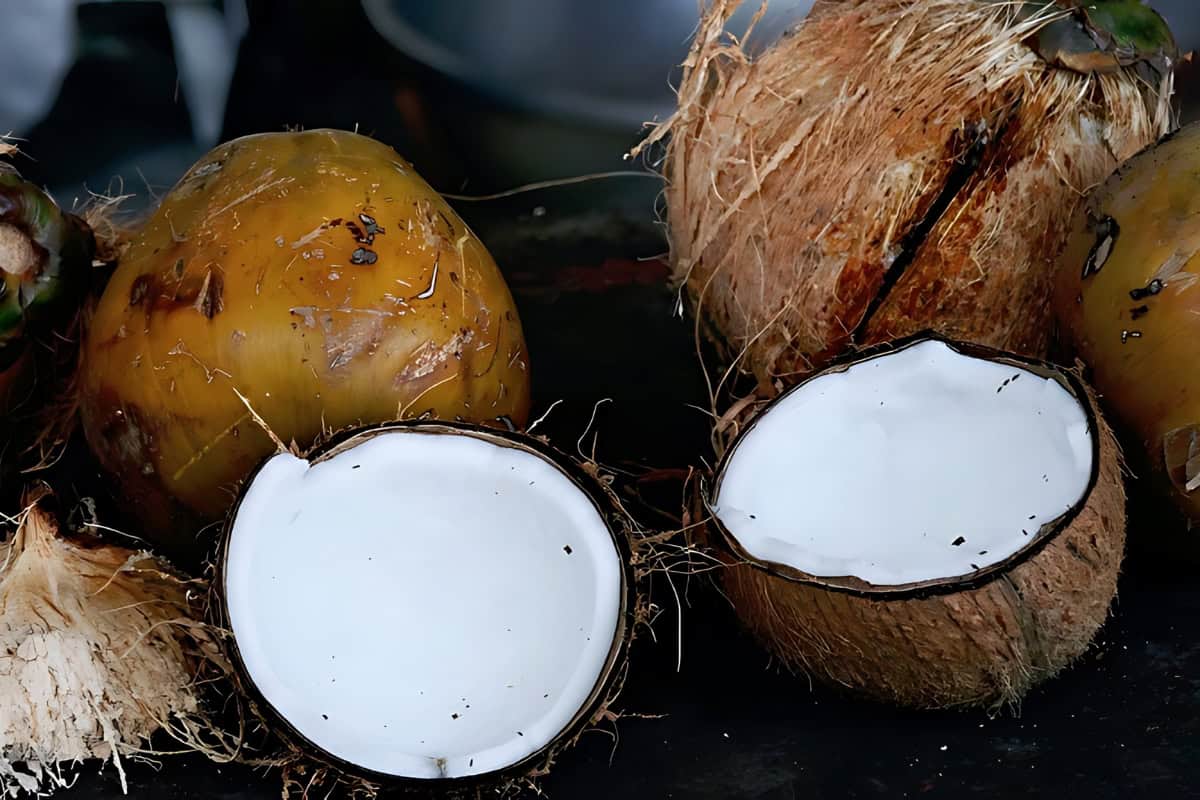
🌴 Fix Sweetened Condensed Coconut Milk Separated
Recently I opened a can of sweetened condensed coconut milk separated into a thick layer of coconut oil, a bit of condensed milk, and a thin sugar syrup. I was dismayed & distressed to say the least, but instead of tossing it, I decided to try applying the principles covered in this post, and they worked great!
So if you also find yourself with a can of separated sweetened condensed coconut milk, or coconut milk separated in drink or draft, this is what to do:
- 1) Use a silicone spatula to scrape everything into a microwave-safe bowl or a nonstick pot.
- 2a) Microwave Method: heat the bowl for 60-90 seconds on half power until everything is melted (continue heating on half power in 15-second increments, if not melted yet). Do NOT let it simmer, boil, or burn, and then remove it from the microwave and put it on a cool countertop.
- 2b) Stovetop Method: heat the contents of the sweetened condensed coconut milk separated in can on a medium flame for one minute, then turn to low for 2-3 more minutes, until fully melted. The residual heat from initially using a medium flame will help quickly melt everything without the possibility of scorching the sugar. Once everything is liquid, scrape the contents into a heat-proof bowl for the final step.
- 3) Regardless of heat method, use a milk frother or a hand mixer (this will be messier) to blend everything together again; you could even do this with a whisk, but it may take a while. Once the mixture is homogenous, let it sit on the counter at room temperature for about an hour, until it's thickened back up, and proceed with using it in your recipe. Alternately, you could put it in the fridge for half as long, but you'll want to take it out and re-blend it every ten minutes, to make sure the coconut oil doesn't re-harden and undo all your hard work.

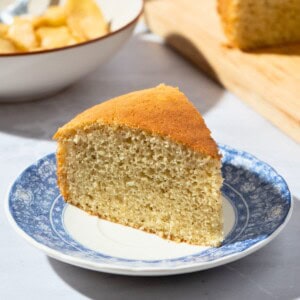











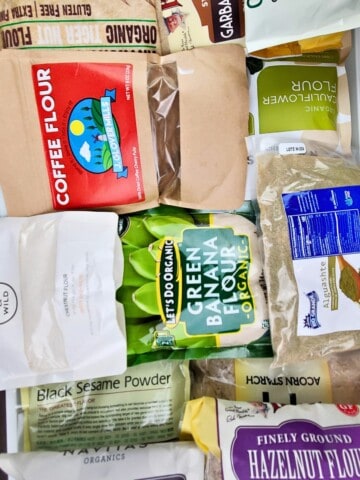
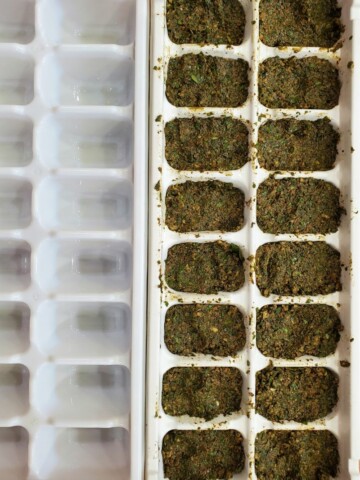


Comments
No Comments